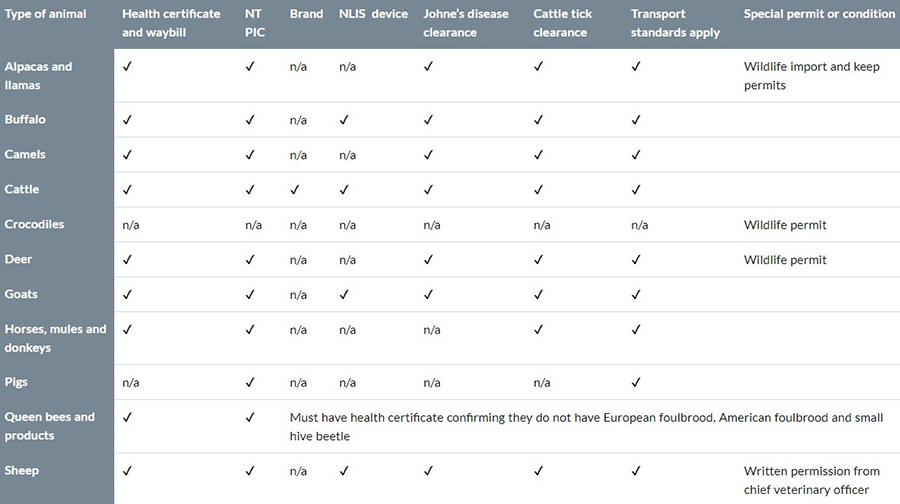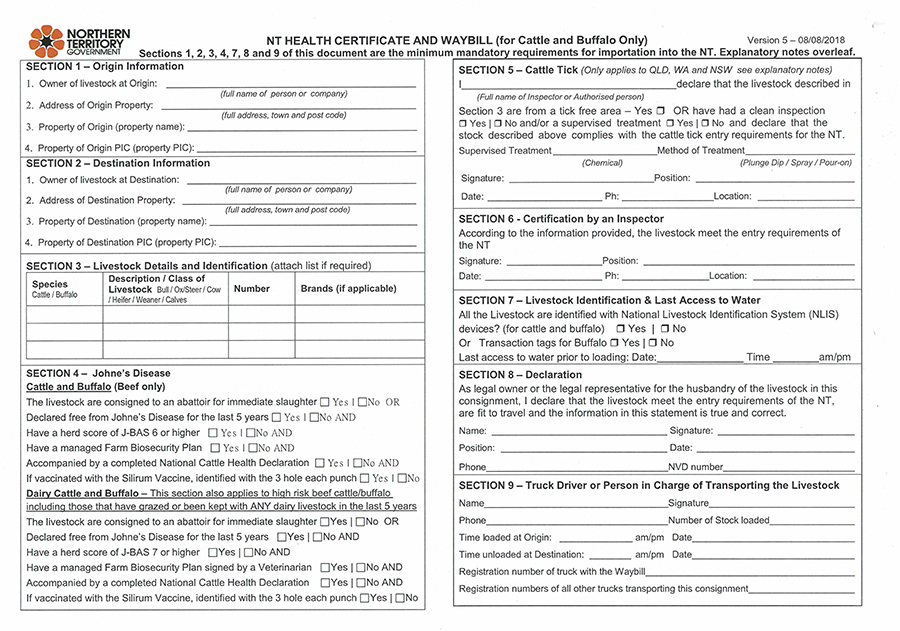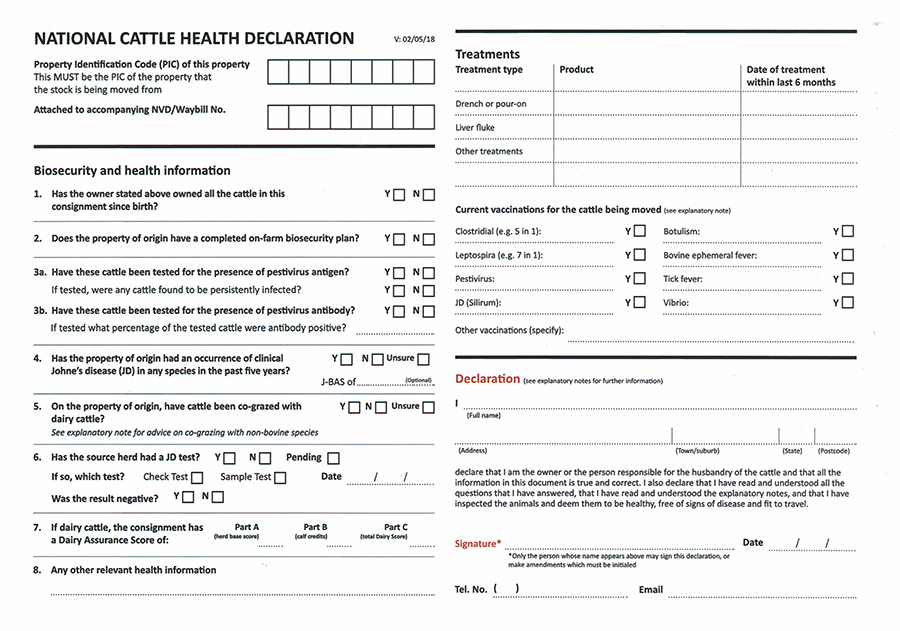Moving livestock into the NT – NT Health Certificate & Waybill
For most species of livestock, including cattle and buffalo, which are entering the Northern Territory (NT) from interstate, they must have an NT Health Certificate and Waybill submitted to an NT Livestock Biosecurity Officer (LBO) in the relevant region, prior to entering the territory. This is to ensure that all required tests and treatments have been conducted to prevent the introduction of animal diseases.

The NT Health Certificate and Waybill also confirms ownership of the animals, including the Property Identification Code (PIC) of the property of origin and the PIC of the property of destination. This detailed information is used to trace animal movements, which is particularly important in the event of a disease outbreak.

It is the responsibility of the livestock owner to ensure all sections are completed on the form before submitting to the LBO (Livestock Biosecurity Officer) in the region of the property of destination in the NT. Failure to complete an NT Health Certificate and Waybill on entry to the NT is an offence under the Livestock Act and Regulations and may incur a penalty or prosecution.
This includes ensuring sections 5 and 6 of the Waybill are signed by an Inspector and/or Authorised person from the region of origin of the livestock, declaring that the livestock are either from a tick free area, have had a clean inspection and/or supervised treatment (if from a tick area), and comply with the NT entry requirements for cattle tick. This section only applies for livestock entering from QLD, WA and NSW. It is not a requirement for cattle originating from SA, Victoria or Tasmania to be treated for ticks, as these states are entirely free of cattle tick. More information on cattle tick can be found on the NT Government website.
An Authorised Inspector includes Veterinarians, Biosecurity Officers or an Accredited Certifier for the clearance of cattle tick. It cannot be declared by the owner of livestock or owners agent.
Section 9 of the Waybill must be completed by the truck driver accompanying the travel of the livestock.
The livestock owner or owner’s agent must complete all sections of the owner’s declaration on the form, this includes sections 1, 2, 3, 4, 7 and 8, and send the original copy with the truck driver accompanying the cattle during transit. It is than delivered to the stock owner taking ownership at the property of destination.
Section 4 includes the owner of livestock to declare if the cattle are free from Johne’s Disease for the last 5 years, which is an infection in livestock caused by the bacteria Mycobacterium avium subsp. Paratuberculosis. The NT requires a J-BAS herd score of 6 or higher for beef cattle and buffalo to enter the NT from interstate. This also needs to be accompanied by a National Cattle Health Declaration, which can be downloaded at the Farm Biosecurity website.
Pigs and crocodiles do not require a NT Health Certificate and Waybill.

For more information on Johne’s Disease, and what is a J-BAS herd score, visit the NT Government website
The NT Health Certificate and Waybill specific to each species of livestock can be found on the following link: NT Government website
